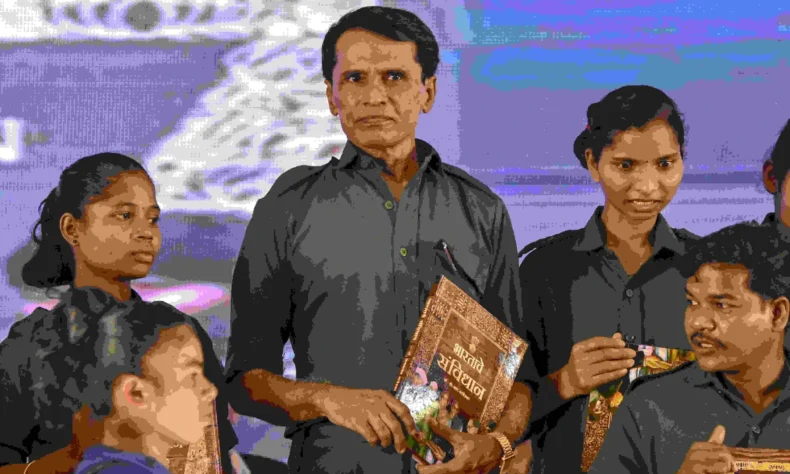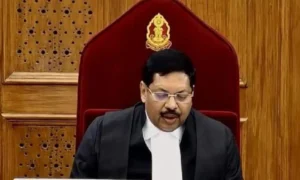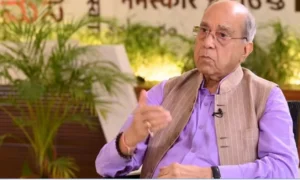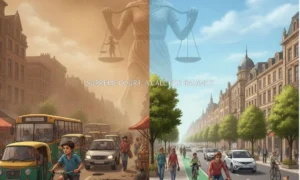
By Neeraj Mishra
With the arrest of Kunjam and surrender of CPI (Maoist) Politburo member Mallojula Venugopal Rao, also known as Bhupathi or Sonu, another chapter of the tribal armed uprising in India may be coming to a close.
Home Minister Amit Shah has unequivocally announced that Bastar will see the end of naxalism by March 2026 and in pursuit of that objective, one of the biggest slaughter of tribals is ongoing since the British mercilessly suppressed the Santhals, Mundas, Kols, Jaintias and Bhils amongst others in the 19th century.
More than 300 naxals have been eliminated in the past one and half years under the cover of eliminating the internal threat to the country. More than 1,000 have been forced to surrender. In the past two decades more than 10,000 civilians and 1780 armed personnel have lost their lives in the struggle to control the mineral rich Bastar. The Red Corridor is a reality but so is the system that breeds it.
The Bastar-Telangana-Gadchiroli belt is perhaps the last remaining contiguous belt with active naxalites. More than 40,000 paramilitary troops have been deployed in the area for the past two years to take on and decimate naxalism. Shah also announced yesterday that now only three districts in Bastar remain naxalite affected: Narayanpur, Bijapur and Sukma.
It is demoralising to note that in a country as vast, diverse and historically subjugated like India, the only real armed resistance always comes from tribals or the border areas. Even today, it’s the Punjab farmers who will rise up against what they consider an unjust law, just like the time when the erstwhile province rose up against the British time and again. Along with them were the Pashtuns, Pathans and Balochs. The same trend continues till date.
The Bengal provinces were another border area which gave the country a consistent supply of militants against the Raj. We are all aware of the big names that emerged from these times and are revered even today as freedom fighters. But, unfortunately, tribal freedom fighters and their cause has been a blind spot in our collective memory.
It is amazing how the rest of the country remained literally unfazed by the atrocities of the Raj and rarely responded with organized violence. The Congress and Gandhi can claim to have taken up the reins of freedom struggle but much before them came the tribals. No one wants to remember or celebrate them as we do Mangal Pandey and Jhansi Ki Rani, the only instance of armed struggle against the British originating in central Indian plains. And, of course, in the name of religion. We suffer massively from a complex and celebrate the occasional heroes because there are so few.
The Gadar of 1857 was preceded by the Santhal uprising of 1855 in the Chhota Nagpur Plateau which lasted two years till it was brutally crushed by the British because they had superior fire power and their own law. The peaceful Santhals had been denied ownership rights over their land through a crooked system of revenue extortion in conjunction with the local landlords. The British made their lives miserable by piling them with debt till the tribals lost their land and livelihood. They rose in unison across modern day Jharkhand and took on the British and the local zamindars with their bows and arrows and unplanned brave attacks. The man with the big guns always wins and they were crushed.
For decades, the Chhota Nagpur Plateau simmered till it revolted again in the Munda revolt of 1899. The Munda tribe, led by the slightly educated Birsa Munda, again took on the British might to free their land and cast away their yoke. No one else across the country recognized their bravery or join them. Again, the British and their cronies put down the brave tribals.
Similar revolts by Jaintias and Garos in erstwhile Assam spread around the 1860s. The Bhils revolted in central India and down south, some more tribals took up arms but they were too poorly armed and few in number. Their spirit remained unsupported by the rest of the country. Their revolt remained localized and did not spread to non-tribal areas. In fact, in most cases, the tribal kings collaborated with the British to put down their own kin.
It does not however take away from the spirit and the bravery of tribals. Their cause is best understood by them alone. They were seen by outsiders—British and Indian alike—as militants or terrorists. It is spectacular that the same region continues to haunt Independent India. Today we know it as the Red Corridor, spreading across Bastar, Jhanrkhand, North CG, North Bengal right upto Nepal in almost a straight passage. The progeny of the same people, their demands unmet, their lives unchanged, the issues are all still hanging even though the exploiters have changed colour and mindset. It is perhaps more rigorous now with exploitation opportunities having tripled and the need to dispossess tribals from their land becoming almost a necessity for the rest of the country’s economic survival.
The British wanted agricultural land and forest wealth. That may be long gone. We want what’s below the earth: Lime, Bauxite, Iron Ore, Gold and Diamonds and everything else from sand to soil. Just as the British taught us, we sent out an army of babus to control and snatch from the original inhabitants what’s rightfully theirs. In return for the precious minerals, we give them roads, building and dams in the name of uplift and development, fully aware that such “development” aids and furthers our own exploitative agenda.
The violence will be quashed by the state and the misguided will be brought back to the mainstream but will the cycle of violence close forever. Unlike the caste and poverty ridden dacoits of the north, who were crushed by the late 70s, the tribals are neither poor nor looking to loot. It’s their well-being that the state has to work on. The state will have to be considerate towards their way of life. If it fails, their rebellious human spirit is unlikely to be crushed.
📰 Crime Today News is proudly sponsored by DRYFRUIT & CO – A Brand by eFabby Global LLC
Design & Developed by Yes Mom Hosting






